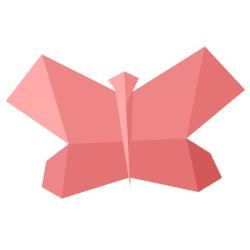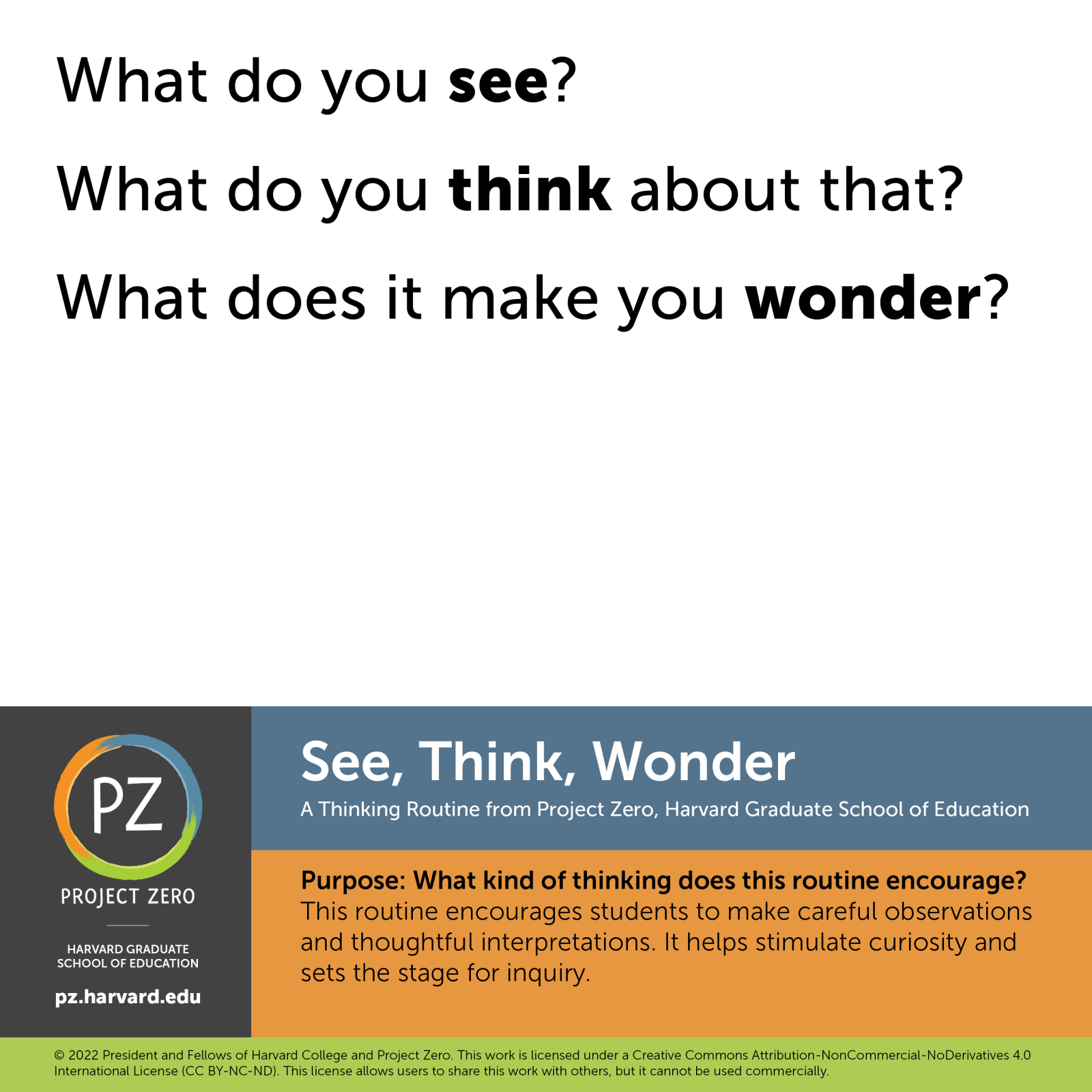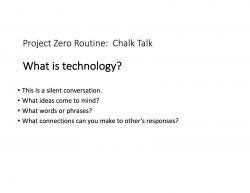Gary Galuska's collections
We the People
<p><u>Essential Questions:</u></p>
<p>What would cause a people to revolt against their government?</p>
<p>Why does a society need a system of government?</p>
<p>Why is it important for Americans to understand their system of government?</p>
<p>Why is it important for Americans to understand the history of their country?</p>
<p><strong>Understanding Moves:</strong> Making Connections, Describe What's There, Uncovering Complexity, Reason with Evidence, Build Explanations</p>
<p><strong>Thinking Moves: See Think Wonder, </strong>Parts Purposes Complexities</p>
<p>#PZPGH<br /></p>
 Gary Galuska
Gary Galuska
18
Animal Adaptations
<p><strong>Generative Topic</strong>: Animal Adaptations</p>
<p><strong>Essential Questions: </strong> </p>
<p>How do organisms live, grow, respond to their environment and reproduce? </p>
<p>How and why do organisms interact with their environment and what are the effects of these interactions? </p>
<p>How can there be so many similarities among organisms yet so many different kinds of plants, animals, and microorganisms? </p>
<p>What are the roles of organisms in a food chain? </p>
<p>How do the structures and functions of living things allow them to meet their needs?</p>
<p>What are characteristics that allow populations of
animals to survive in an environment?</p>
<p>How does the variation among individuals affect their survival?<br /></p>
<p><strong>Understanding Moves:</strong> Describe What's There, Uncovering Complexity, Reason with Evidence</p>
<p><strong>Thinking Moves: </strong>See Think Wonder, Parts Purposes Complexities</p>
<p><strong>Lesson Focus: </strong> </p>
<p>Students will investigate that animals have both internal and external structures that serve various functions in growth, survival, behavior, and reproduction and will engage in engineering and design. Students build a model and use their understanding of how animals are adapted to survive in a particular environment.</p>
<p><strong>Prior Learnings/Connection:</strong></p>
<p>Students have prior knowledge about ecosystems, animal classifications, basic adaptations such as means of obtaining diet, protection, and movement.</p>
<p>
</p>
<p><strong>Understandings:</strong></p>
<p>Organisms interact in feeding relationships in ecosystems.</p>
<p>Organisms may compete for resources in an ecosystem.</p>
<p>For any particular environment, some kinds of organisms survive well, some survive less well, and some cannot survive at all.<br /></p>
<p>Populations live in a variety of habitats, and change in those habitats affects the organisms living there.<br /></p>
<p>Other characteristics result from individuals’ interactions with the environment. Many characteristics involve both inheritance and environment.<br /></p>
<p>Many characteristics of organisms are inherited from their parents.</p>
<p>When the environment changes in ways that affect a place’s physical characteristics, temperature, or availability of resources, some organisms survive and reproduce, others move to new locations, yet others move into the transformed environment, and some die.<br /></p>
<p>Populations live in a variety of habitats, and change in those habitats affects the organisms living there.<br /></p>
<p>Aquisition of Knowledge and Skill<br /></p>
<p>Knowledge:</p>
<p>Producers (plants, algae, phytoplankton) make their own food, which is also used by animals (consumers).<br /></p>
<p>Decomposers eat dead plant and animal materials and recycle the nutrients in the system.</p>
<p>Adaptations are structures and behaviors of an organism that help it survive and reproduce. </p>
<p>Organisms are related in feeding relationships called food chains. Animals eat plants, and other animals eat those animals.<br /></p>
<p>Skills:</p>
<p>Make observations to produce data to serve as the basis for evidence for an explanation of a phenomenon or test a design solution.</p>
<p>Use evidence (e.g. measurements, observations, patterns) to construct an explanation.</p>
<p>Identify the cause and effect relationships that are routinely identified and used to explain change.</p>
<p>Observe and identify structures and behaviors that help an animal survive in its environment.</p>
<p>Present results of their investigations in an organized manner.<br /></p>
<p>Make a claim and supporting it with evidence.<br /></p>
<p>Synthesize information from more than one source.<br /></p>
<p>Assessment Evidence:</p>
<p>Performance Task: </p>
<p>This collaborative project gives students the opportunity to take part in the systematic practice of engineering and design to achieve solutions to problems. During a life science unit, fourth grade students learn that for any particular environment, some kinds of organisms survive well, some survive less well, and some cannot survive at all. Students then apply these core scientific ideas to demonstrate understanding as they design, test, and refine an animal that is well suited to survive in its environment. By integrating content with practice, students are better able to make sense of science.<br /></p>
<p>Presentation:</p>
<p>Students will create a presentation in which they showcase their Animal design and explain how it is well adapted to survive in its environment.</p>
<p>Learning Activities:</p>
<p>During See Think Wonder students engage in observation of animals as the foundation for greater insight into structure and function. Students first look closely at an animal to fully observe and notice before interpreting. Then students can begin to make interpretations based on their observations. Students use Smithsonian Collection resources, such as videos, 3D models with pins/annotations, articles to further explore blue crab structures and behaviors and how they help the animal survive in its environment. Students then use Parts Purposes Complexities routine to develop understanding of the concept of adaptation - a structure or behavior that improves an organism's chance of survival. Students study the blue crab environment and as they consider how people changing the crabs' environment have affected the blue crab population. To assess understanding, students complete the Animal Adaptations design challenge.</p><p>#PZPGH</p>
 Gary Galuska
Gary Galuska
15
What is Technology?
<ul><li>Generative Topic: Technology
</li><li>Essential Questions: How do we define technology?
</li><li>Understanding moves: Make Connections</li><li>Thinking routines: Chalk Talk, Parts, Purposes Complexity, I Used Think...Now I Think</li></ul><p><br /></p>
<p>A common misconception among elementary age students is that technology only refers to things powered by electricity. This experience will guide them to better understanding of technology and that engineers create technology. During a Chalk Talk, students explore the question "What is Technology? Students then use the Parts Purposes Complexity routine to look closely at everyday objects such as a glue stick, scissors, and a stapler. Teachers can provide the objects for students to observe in the classroom or use the images in this collection. Students discuss the parts, the materials the object is made of, and the problem it solves as they discover that technology is everywhere around us and engineers are people who create technologies. Students complete a sort as they decide whether the things in this collection are examples of technology. After, completing the sort, guide students to define technology as the human use of scientific knowledge to solve problems and that it includes systems and processes. To assess understanding, students will use "I used to think, now I think " thinking routine . A Circle of Viewpoints routine could also be used to have students think about the Cotton Gin from the viewpoint of a slave.</p><p>#PZPGH</p>
 Gary Galuska
Gary Galuska
13



